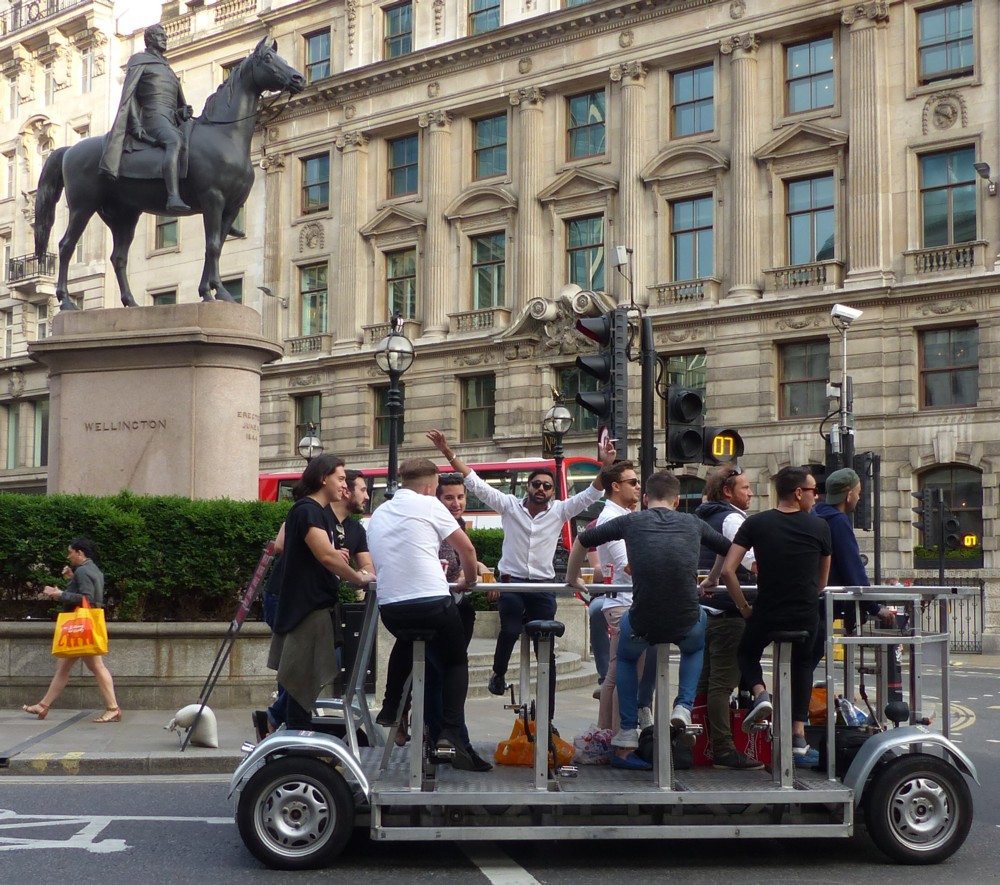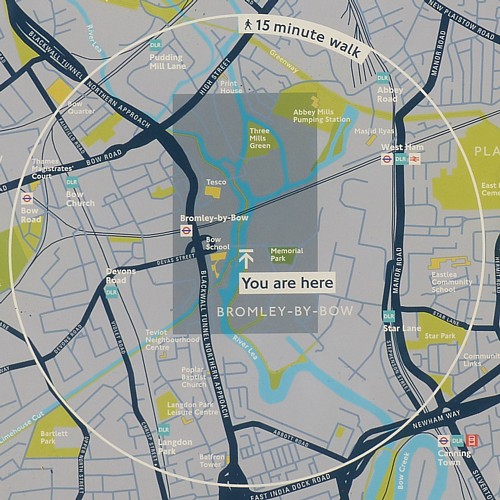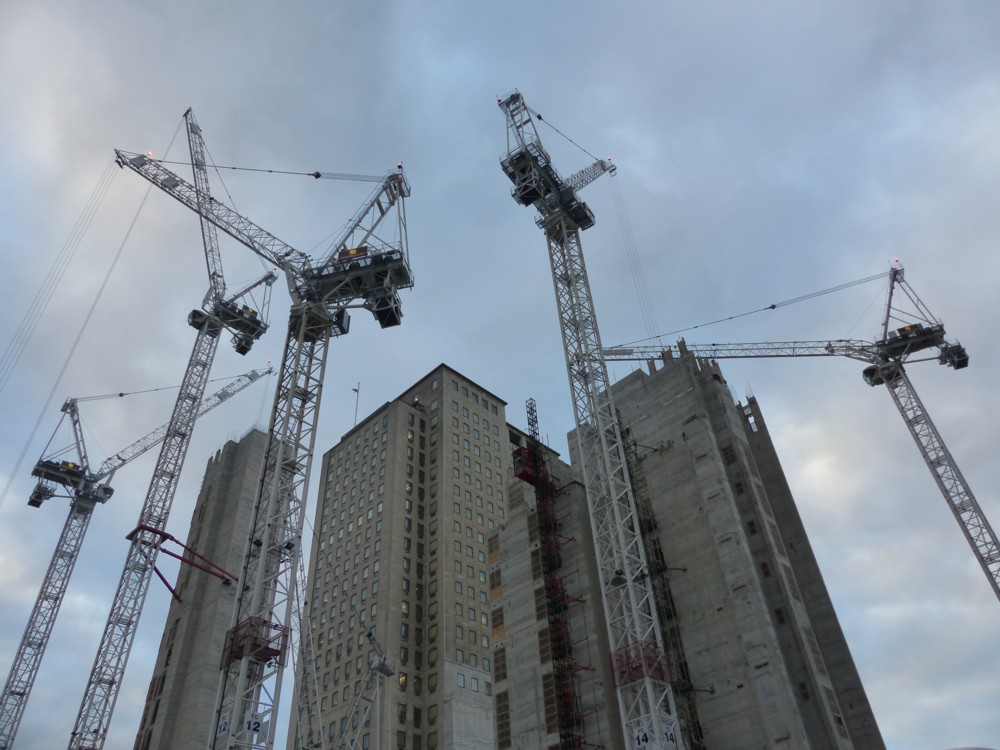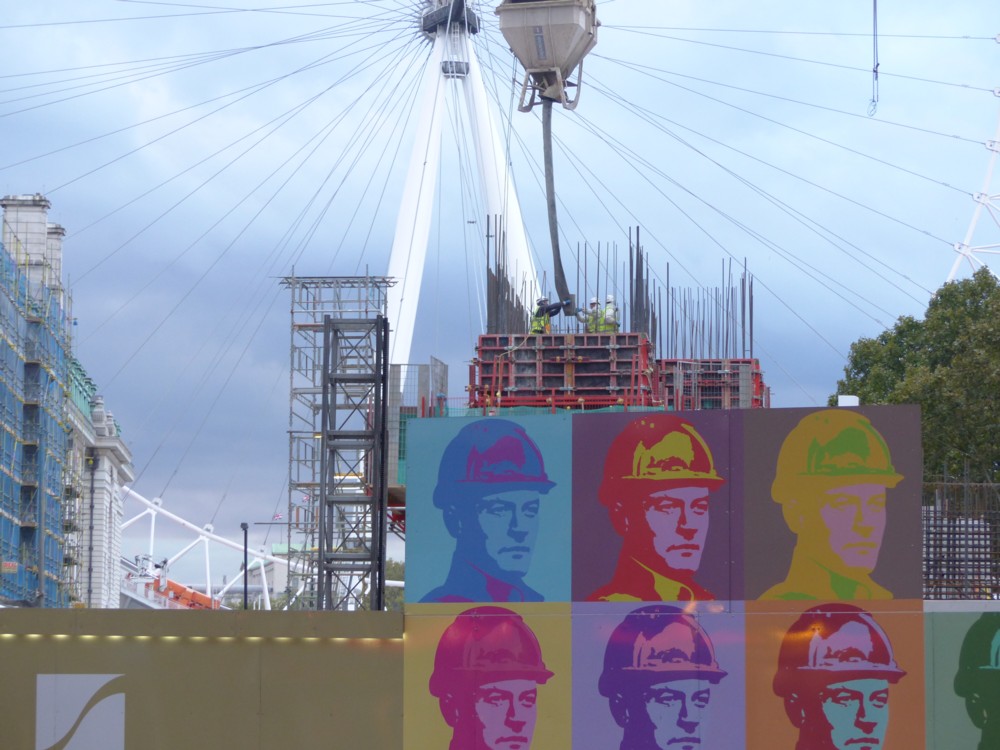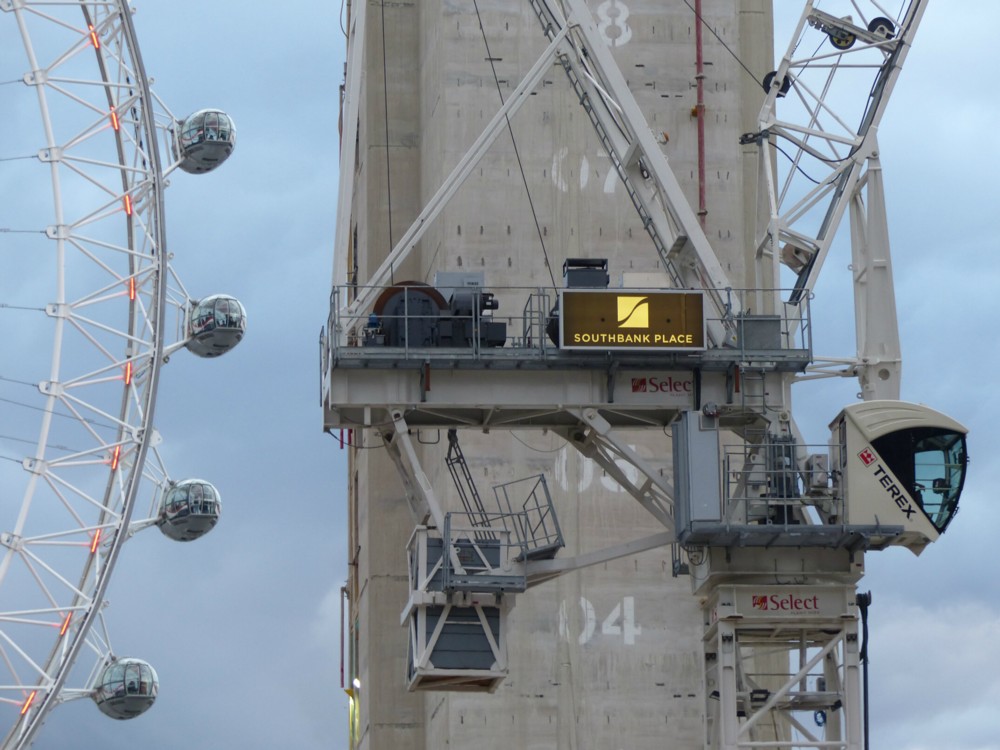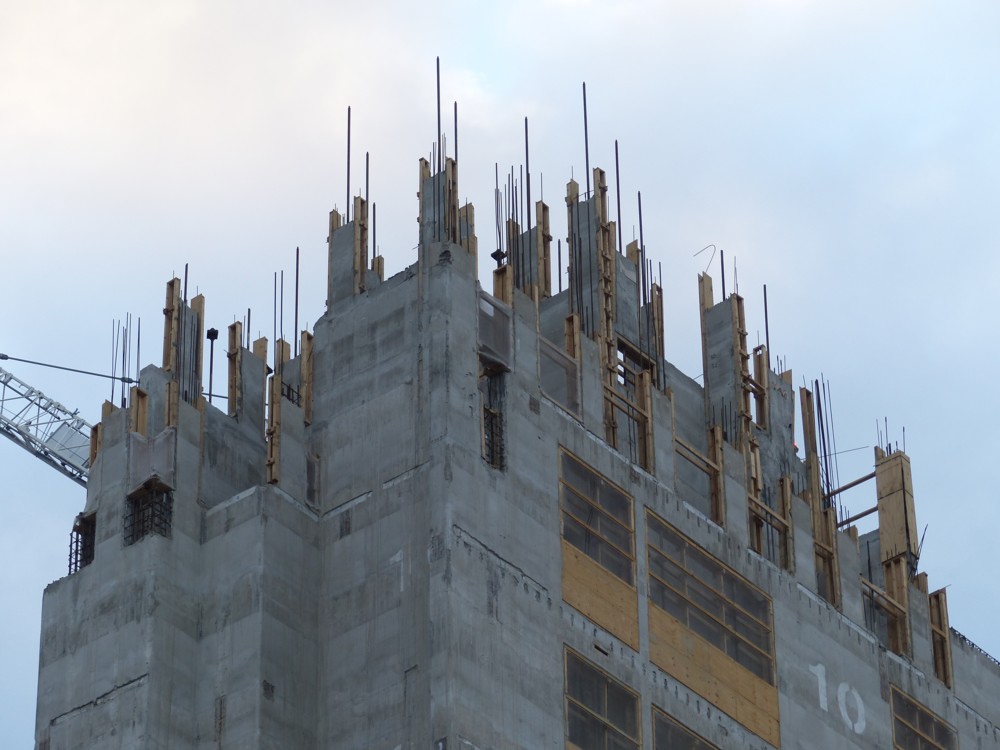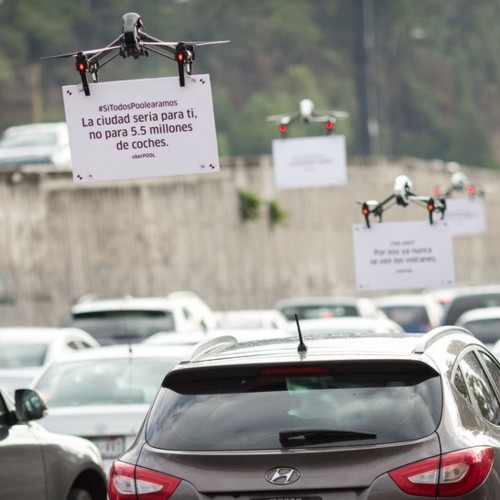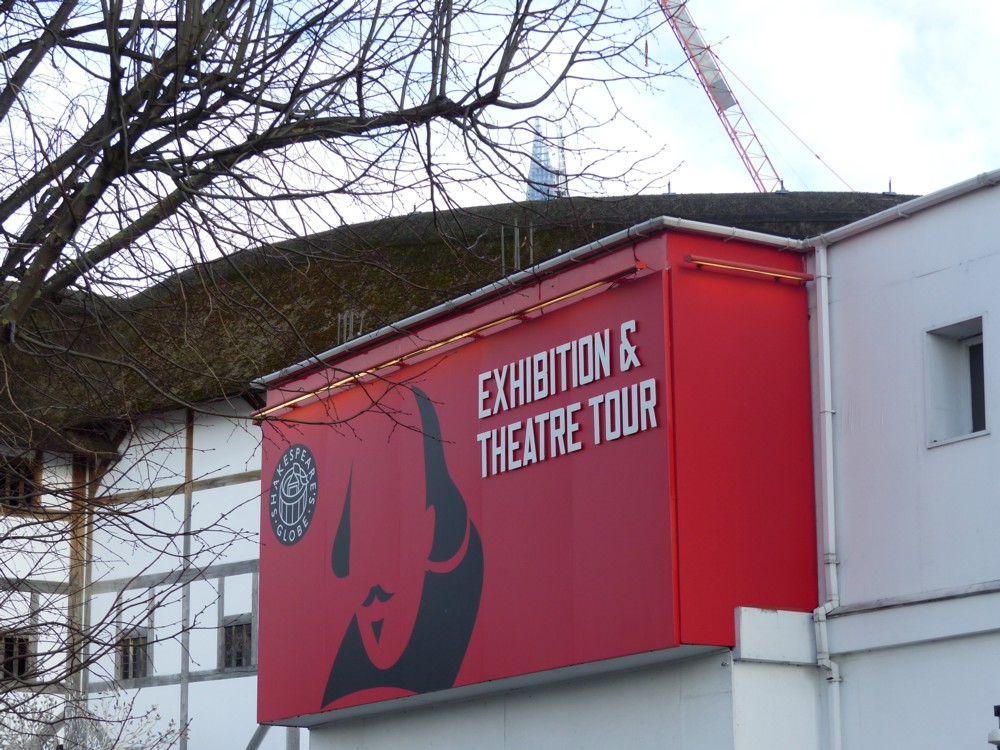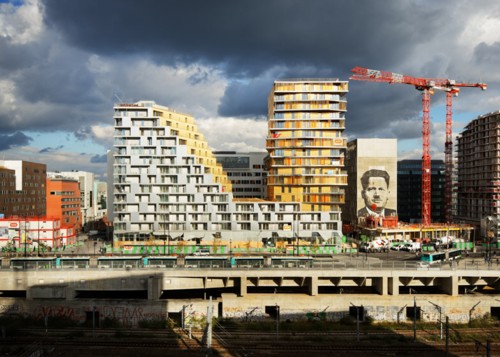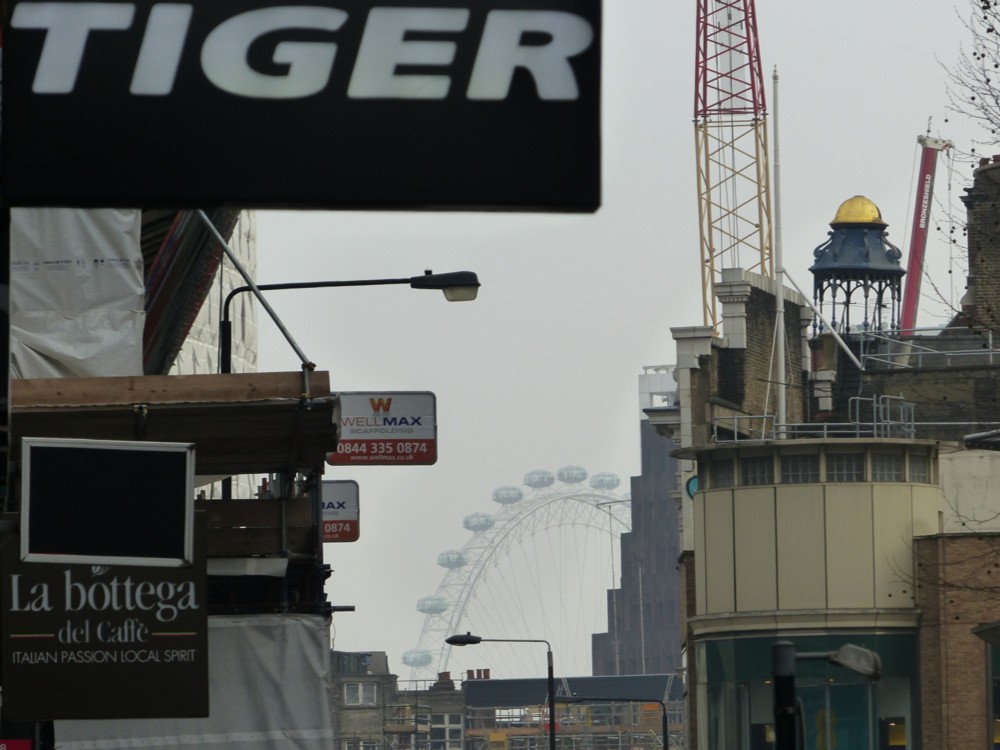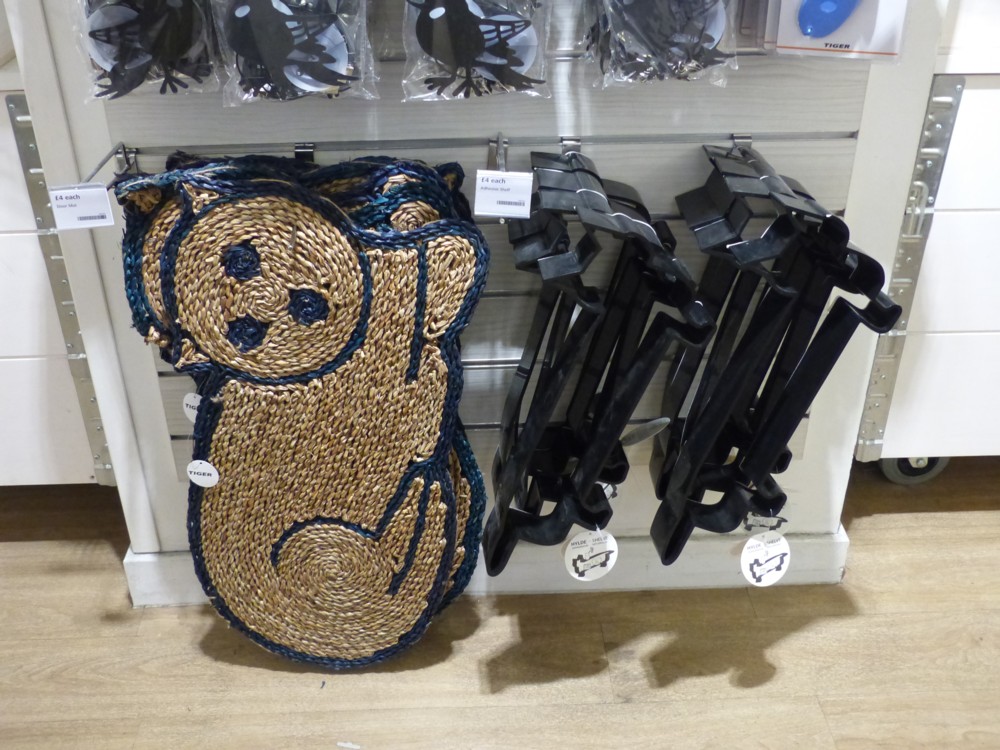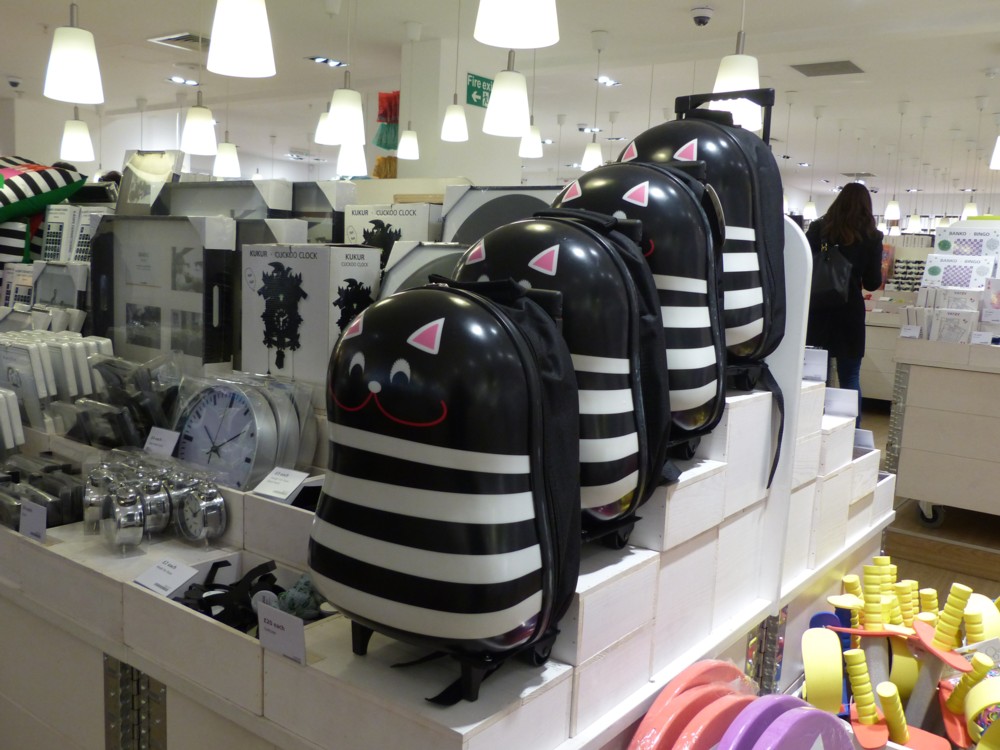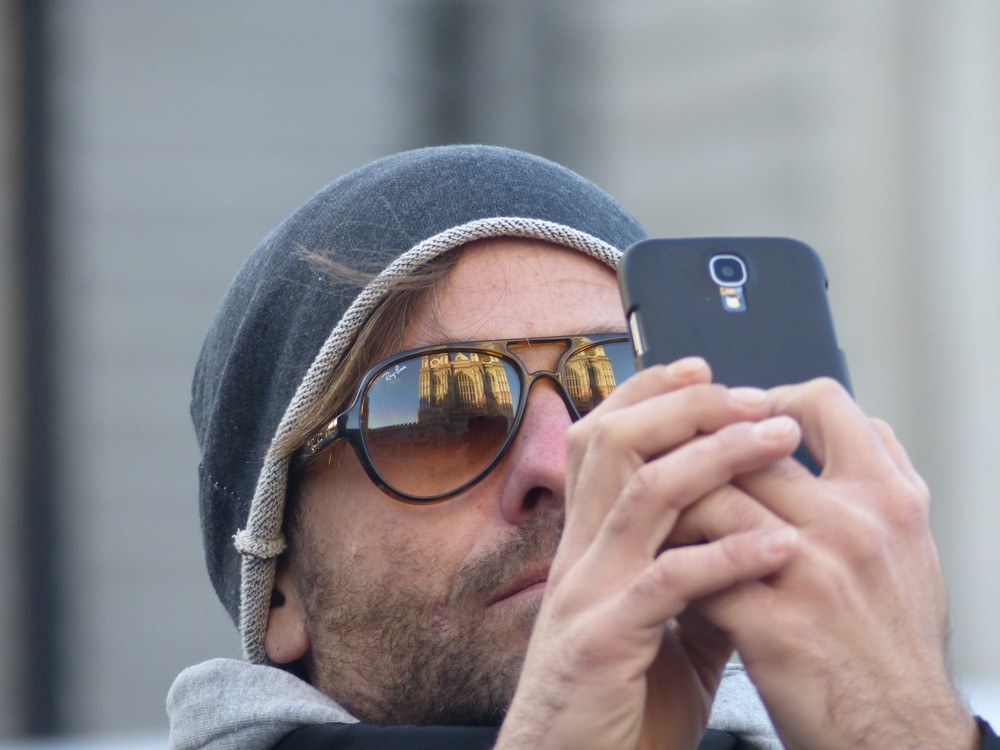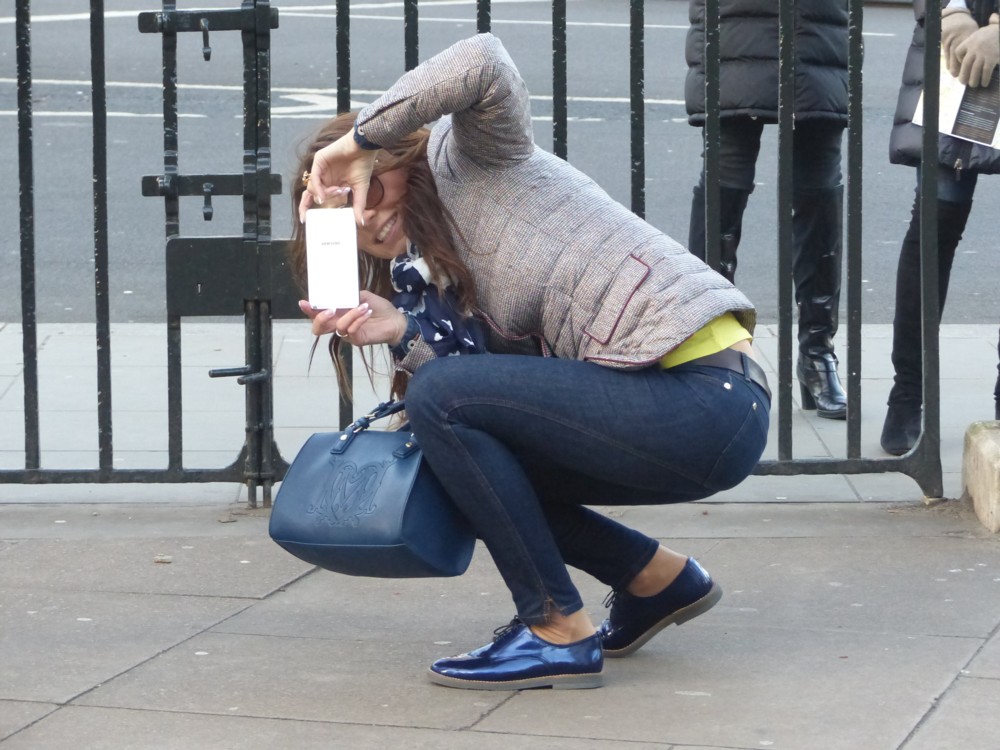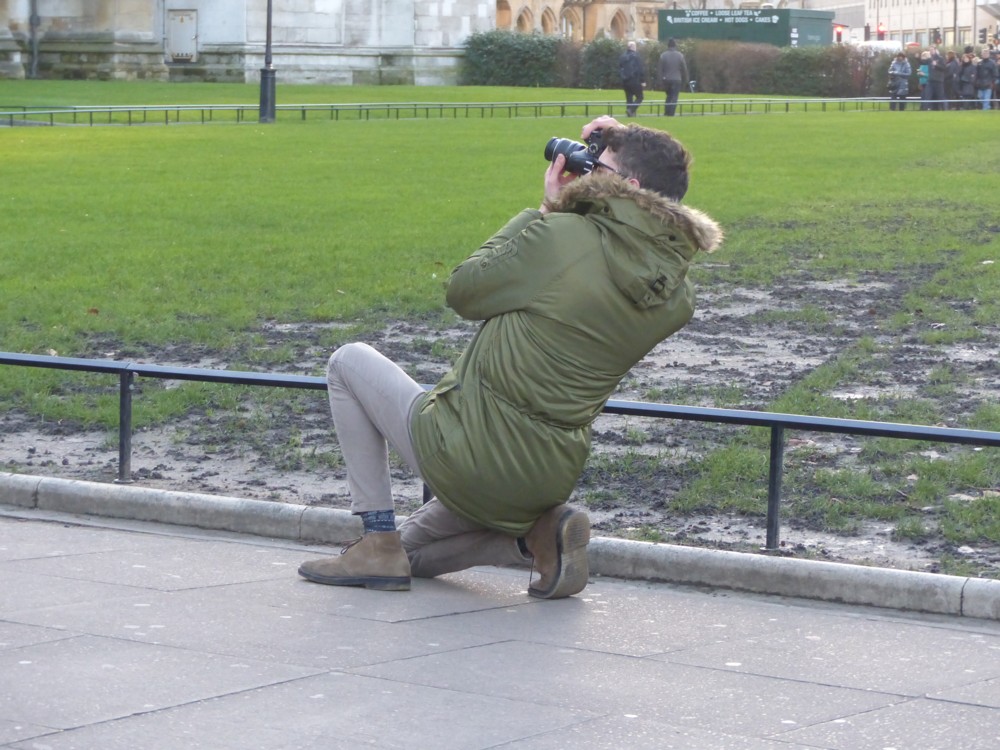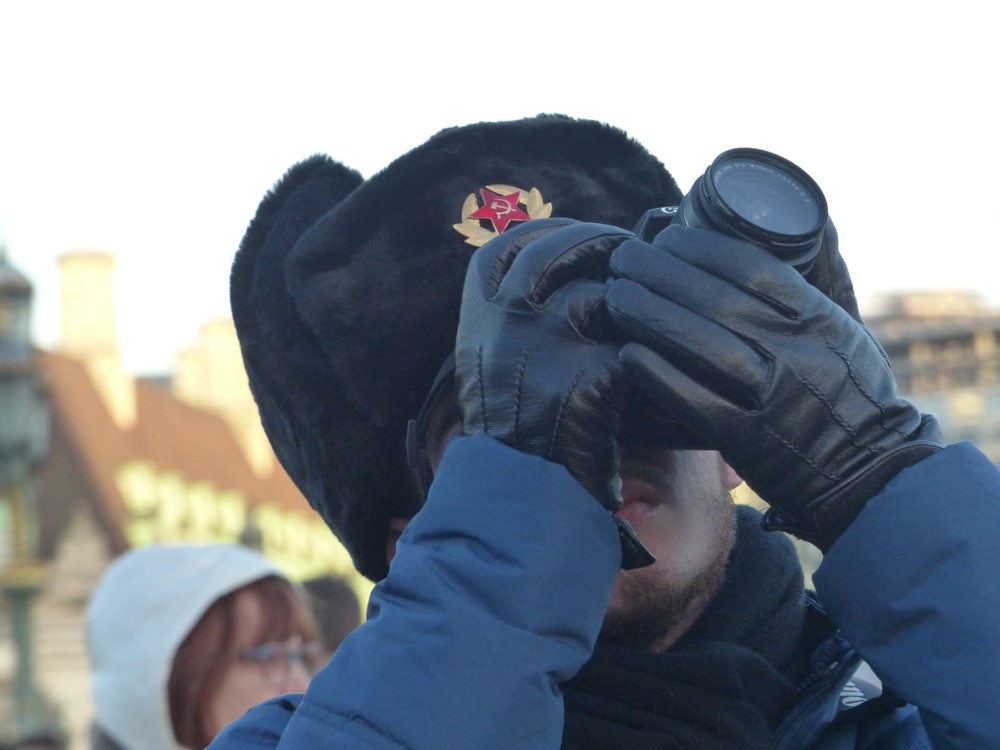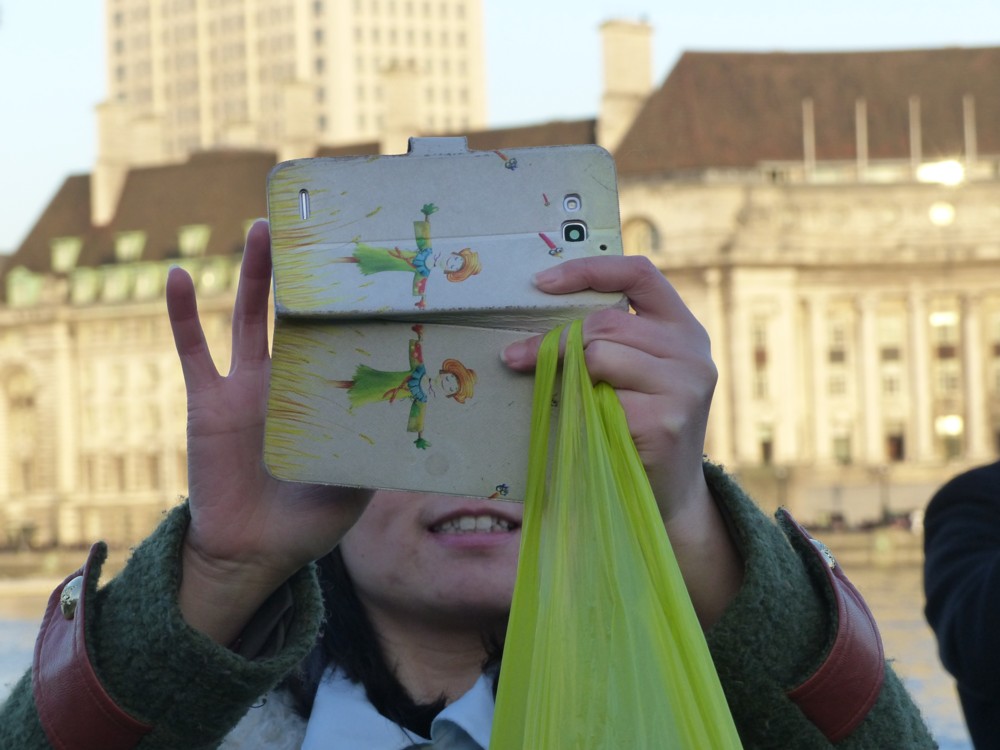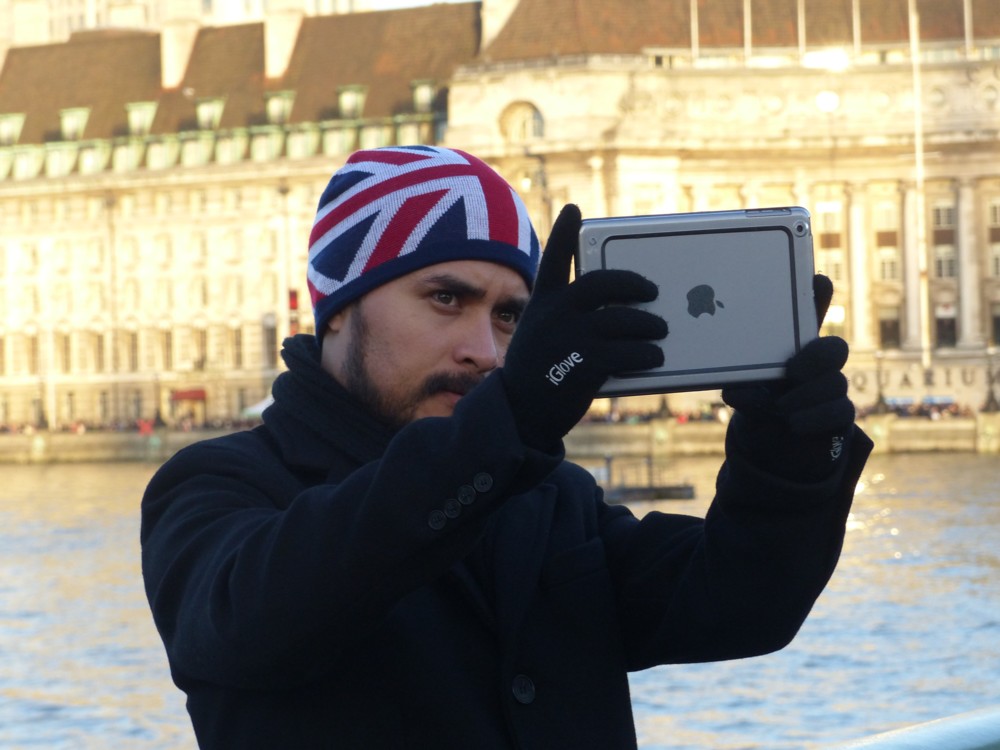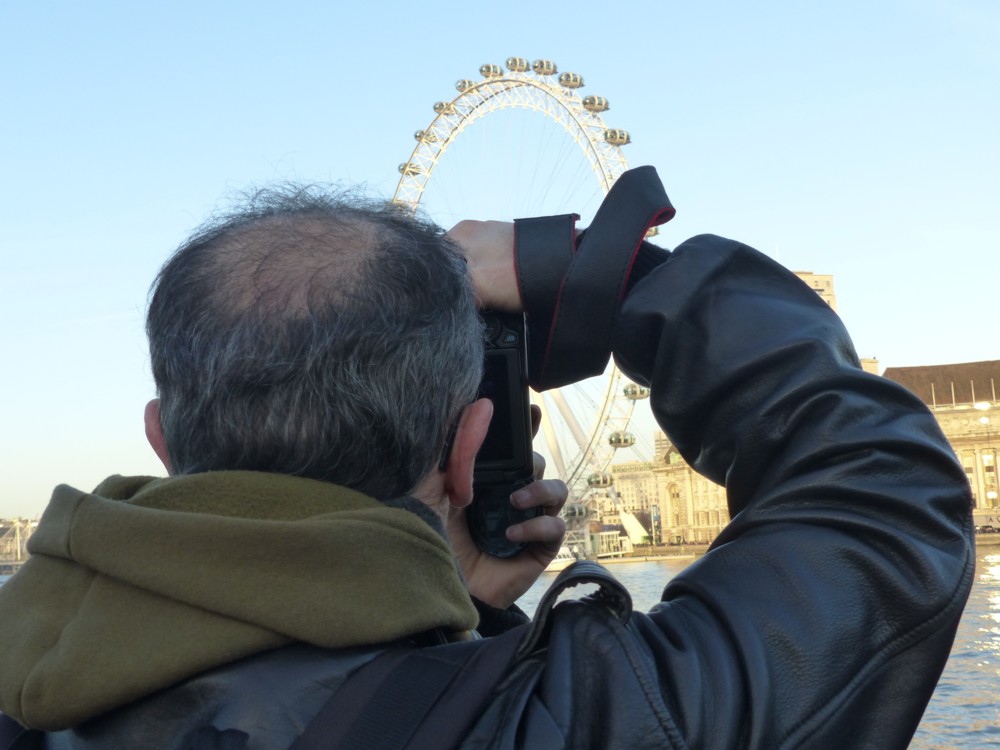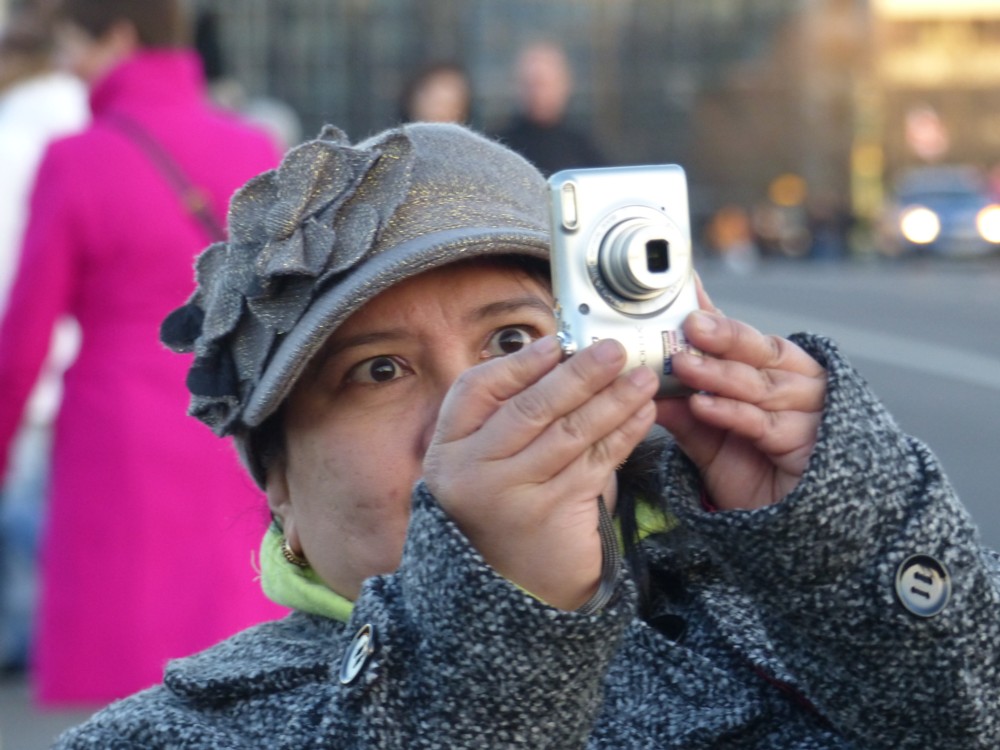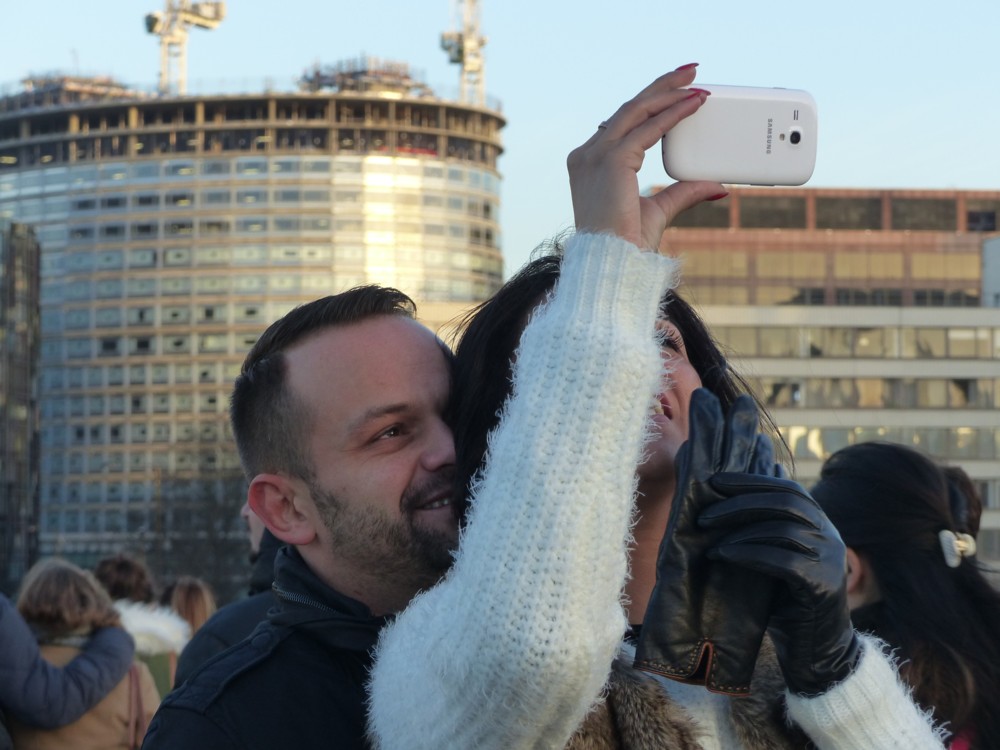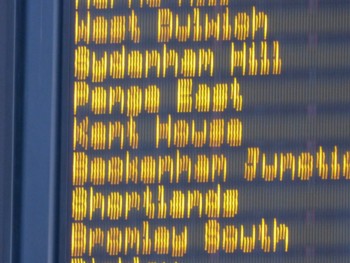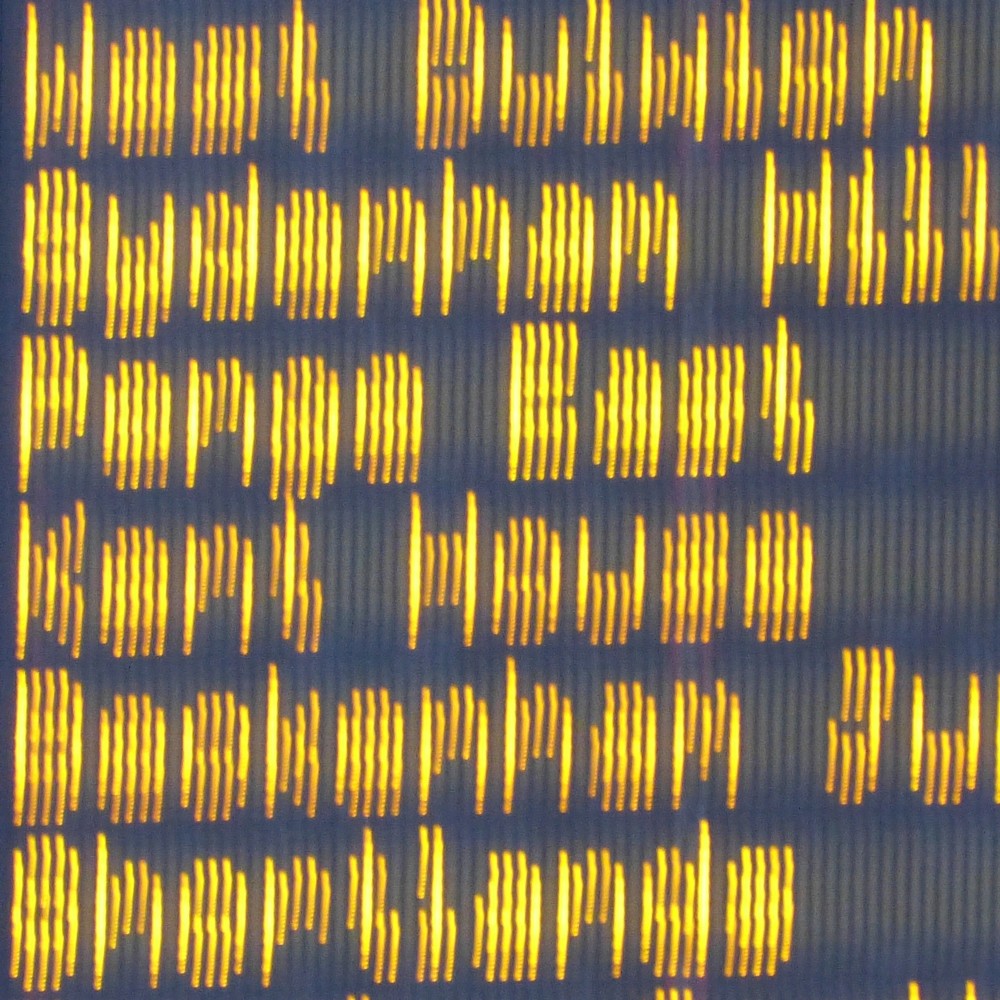A few hours after I took this photo (and not before all the latest terrorist dramas that were happening on the other side of the river (which I later crossed)), I took this photo, outside the Bank of England:
This combines four things that interest me.
First, most obviously, it is a photo of an unusual means of transport. Rather confusingly, this contraption had “PedalBus.com” written on it. But when you type that into the www, you get redirected to pedibus.co.uk. Where you also discover photos of contraptions with “PedalBus.com” on them. Very confusing.
Second, the persons on the pedibus/PedalBus are making a spectacle of themselves. People who make a spectacle of themselves are not entitled to anonymity, or not at this blog. Photoers going about their photoing business do, mostly, get anonymity here. But people yelling drunkenly, albeit goodnaturedly, and striking dramatic attitudes when I photo them, not.
Third, I like these downward counting numbers on the pedestrian light bits of traffic lights, which London apparently got from New Zealand. (Blog and learn.) Very useful. I like to photo them, preferably in combination with other interesting things. Score. Score again, because there is not just one 7 in this photo, there are two 7s. This particular time of the day, just when it is starting to become dark, is the best time to photo these numbers.
And fourth, I am becoming increasingly interested by London’s many statues, as often as not commemorating the heroes of earlier conflicts. I think one of the things I like about them is the sense of a very particular place that they radiate, just as the more showoffy Big Things do, but even more precisely. They thus facilitate meeting up with people. “In front of the Bank of England” might prove too vague. “Next to Wellington” pins it down far more exactly.
The Wellington statue makes a splendid contrast with the pedi/PedalBussers. Wellington is Wellington, seated on his horse (Copenhagen presumably), very dignified and patrician. And the peddlers are the kind of people he commanded in his battles.
I don’t get why this statue is in front of the Bank of England. Why isn’t there a Wellington statue at Waterloo?

